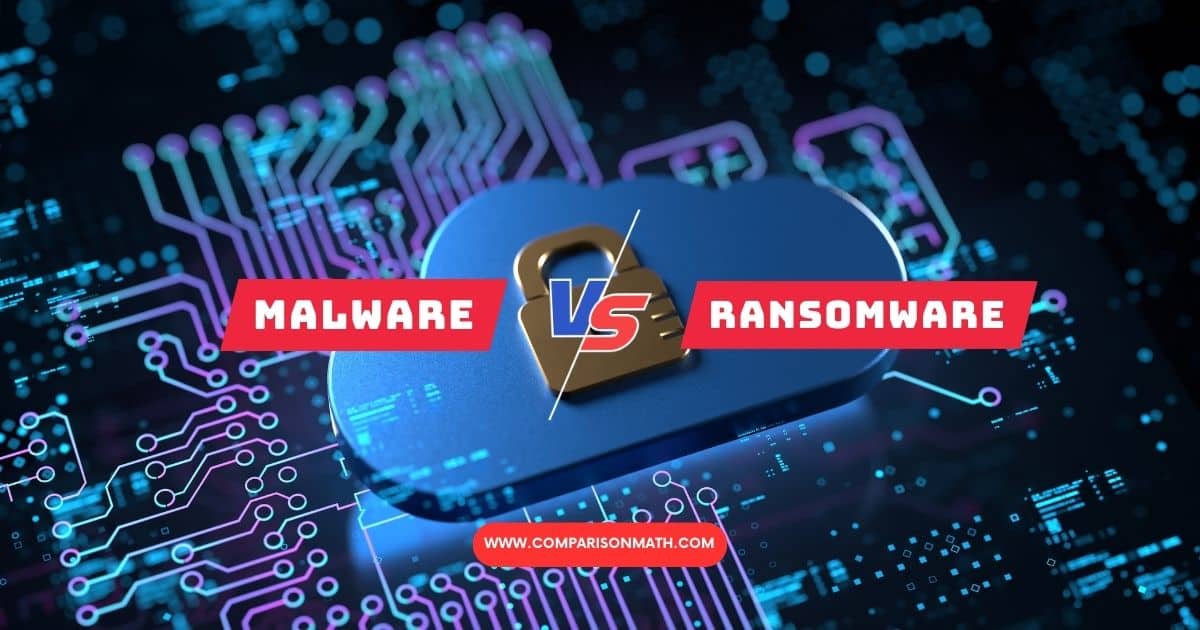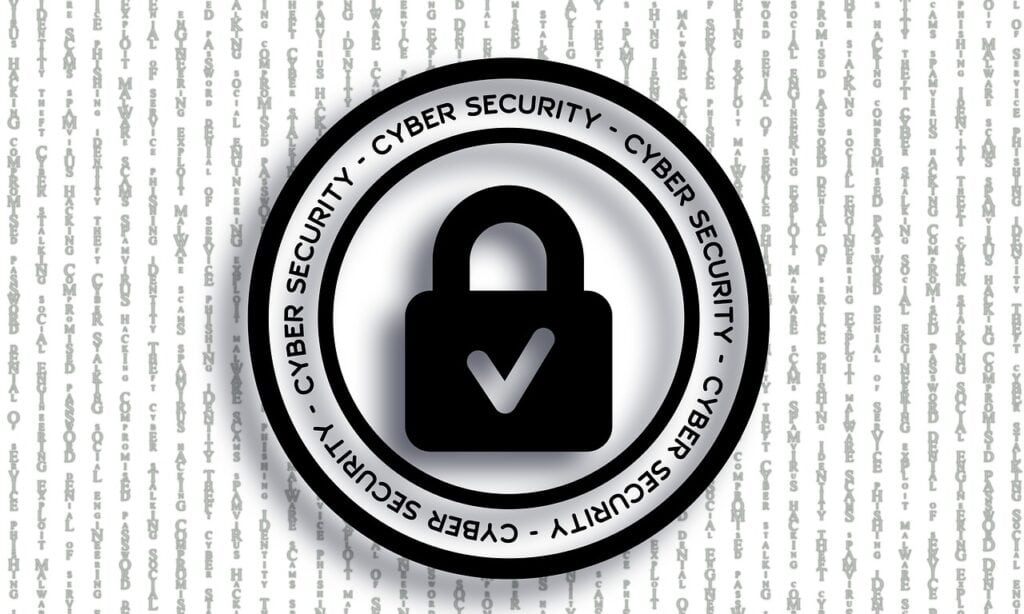Physical Address
304 North Cardinal St.
Dorchester Center, MA 02124

In an era where our lives are increasingly intertwined with digital realms, the importance of cybersecurity has never been more pronounced. With threats like malware and ransomware constantly evolving, understanding their intricacies isn’t just for tech experts – it’s essential knowledge for everyone. This guide aims to demystify these terms, offering in-depth insights into Malware vs Ransomware. We’ll explore their nature, impact, and how to guard against them, equipping you with the knowledge to navigate the digital world safely.

Malware is an umbrella term for various types of malicious software, including viruses, worms, trojans, and spyware. These programs are designed to infiltrate and damage computers, often for the benefit of a third party.
Types of Malware: Viruses, Trojans, and More
How Malware Affects Your Digital Security
The effects of malware can range from brief annoyance to computer crashes and identity theft. The 2017 WannaCry ransomware attack, for example, caused a global crisis, affecting over 200,000 computers across 150 countries, with damages ranging in the billions.
Ransomware is a notorious form of malware. It encrypts the victim’s files, making them inaccessible, and demands a ransom to decrypt them. It’s a digital kidnapping of your data.
The Mechanics of Ransomware Attacks
Ransomware typically spreads through phishing emails or by unknowingly visiting an infected website. Once the ransomware has been executed, it encrypts your files, and you receive a demand for payment in exchange for a decryption key.
High-Profile Ransomware Cases and Their Consequences
Consider the 2017 NotPetya attack, initially launched against Ukraine. It spread worldwide, causing billions of dollars in damage to companies across Europe, Asia, and the Americas. It starkly illustrated ransomware’s devastating effectiveness.
Understanding the nuances between malware and ransomware is crucial for effective digital defense. While both pose significant threats to cybersecurity, their methods, impacts, and the strategies required to combat them vary greatly.
Functional Distinctions Between Malware vs Ransomware
The Varying Threats of Malware and Ransomware
The digital threat landscape is ever-evolving. We see an increasing use of sophisticated techniques in both malware and ransomware creation, including the use of polymorphic code that changes its signature to evade detection. Moreover, with the rise of cryptocurrency, ransomware attacks have become more lucrative and hence more common.
Moreover, while both malware and ransomware are formidable threats in the cyber world, understanding their distinct characteristics is vital in developing effective defense strategies. By staying informed and prepared, individuals and organizations can better protect themselves against these digital dangers.
Misconception 1: All Malware is Ransomware
Misconception 2: Ransomware Doesn’t Affect Personal Users
Misconception 3: Paying the Ransom Guarantees Data Recovery
The advancement of technology plays a dual role in the realm of cybersecurity. On one hand, emerging technologies like artificial intelligence (AI) and machine learning (ML) are being employed by cybercriminals to create more sophisticated attacks. On the other hand, these same technologies are crucial tools for cybersecurity professionals in detecting and responding to threats.
To protect against malware and ransomware, it’s essential to integrate best practices into our daily digital routines. This includes regular software updates, using strong, unique passwords, being cautious with email attachments and downloads, and maintaining regular backups of important data. Education and awareness are key; staying informed about the latest threats and trends can significantly reduce the risk of falling victim to these types of attacks.
In the fight against malware and ransomware, staying informed and proactive is crucial. Regularly updating your knowledge about cybersecurity, participating in community forums, and sharing information with peers can help build a collective defense against these threats. Remember, in the digital world, awareness and preparedness are your best allies.
The primary difference lies in their intent and function. Malware is a broad term that includes various types of malicious software designed to disrupt, damage, or gain unauthorized access to computer systems. It includes viruses, worms, trojans, and more. Ransomware, on the other hand, is a specific type of malware that encrypts a victim’s files and demands a ransom for their decryption. While all ransomware is malware, not all malware is ransomware.
Yes, ransomware can affect mobile devices. Although it’s more commonly associated with computers, mobile ransomware exists and can infect smartphones and tablets, often through malicious apps or phishing attempts. Keeping your mobile devices updated and being cautious about app downloads and email links can help prevent such attacks.
Signs of a malware infection may include your computer running slower than usual, crashing unexpectedly, displaying strange pop-ups, or redirecting web searches. Ransomware, however, often announces itself, as it locks your files and displays a ransom demand. Regular scans with reputable antivirus software can help detect and remove malware infections.
Not necessarily. Paying the ransom does not guarantee the return of your data and can further fund criminal activities. The best defense against ransomware is prevention, including regular backups of important data. If infected, seek professional help from cybersecurity experts.
To protect yourself, practice good digital hygiene: keep your software updated, use robust antivirus programs, be cautious with emails and downloads, and regularly back up your data. Education about cybersecurity threats and best practices is also vital in preventing such attacks.
If your computer is infected with malware, disconnect it from the internet to prevent the spread of the infection. Run a full scan using a trusted antivirus program to identify and remove the malware. If the issue persists, consider seeking professional help.
Antivirus programs can be effective in detecting and preventing many types of ransomware. However, they are not foolproof, as new ransomware variants constantly emerge. Employing a multi-layered defense approach, including regular backups and user education, is the best strategy.
Recent trends show an increase in ransomware attacks targeting large organizations, the use of sophisticated phishing techniques, and the leveraging of AI and machine learning by cybercriminals to enhance the effectiveness of their attacks. Staying updated with the latest cybersecurity trends and protective measures is essential.
Yes, some types of malware are designed to spread across networks, infecting other devices connected to the same network. Ensuring all devices on the network are protected and implementing network security measures can help prevent the spread.
It’s recommended to back up your data regularly, depending on how frequently it changes. For most individuals and small businesses, weekly backups may be sufficient. However, for those handling critical data daily, more frequent backups, such as daily or even real-time backups, might be necessary.